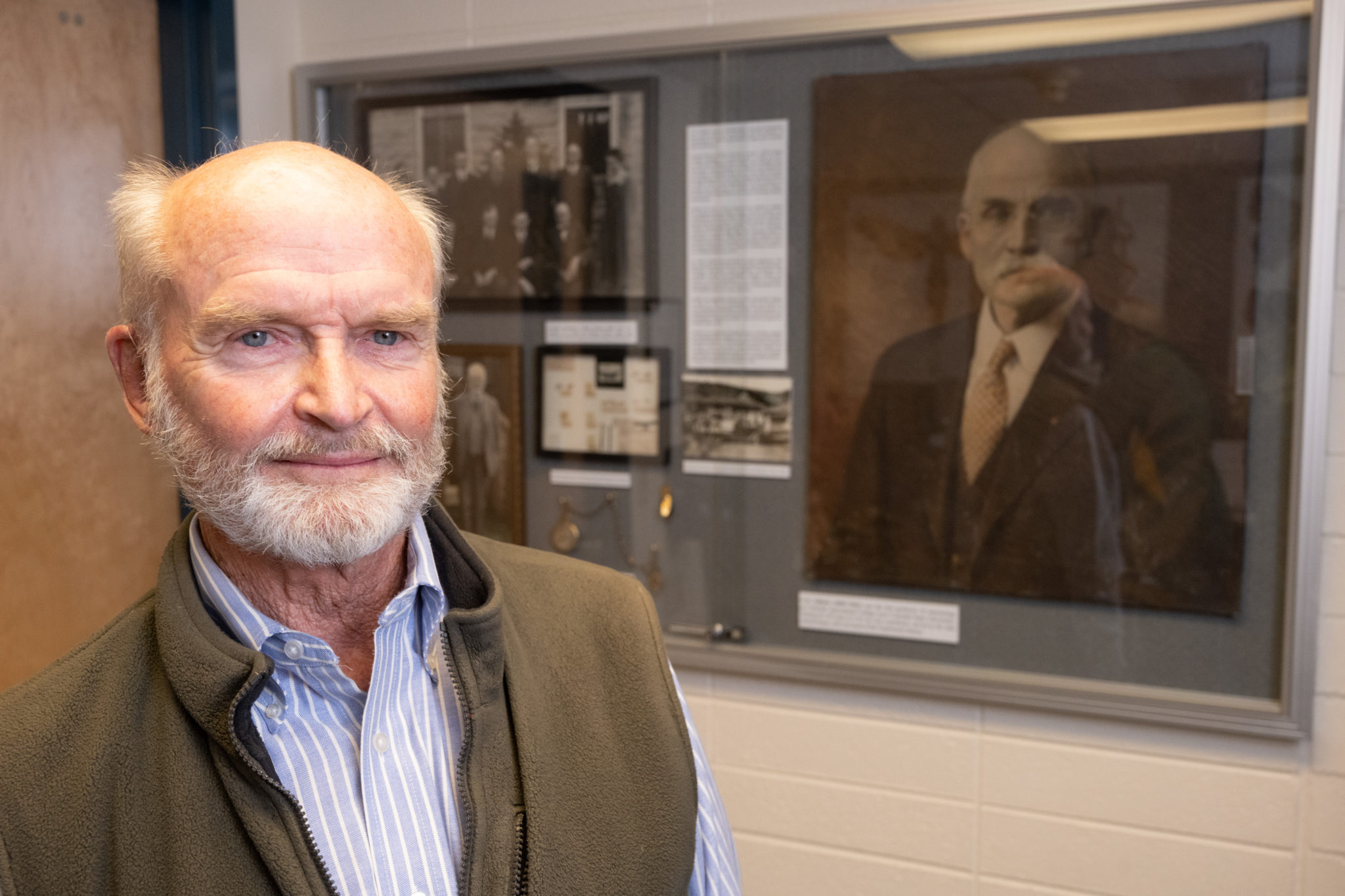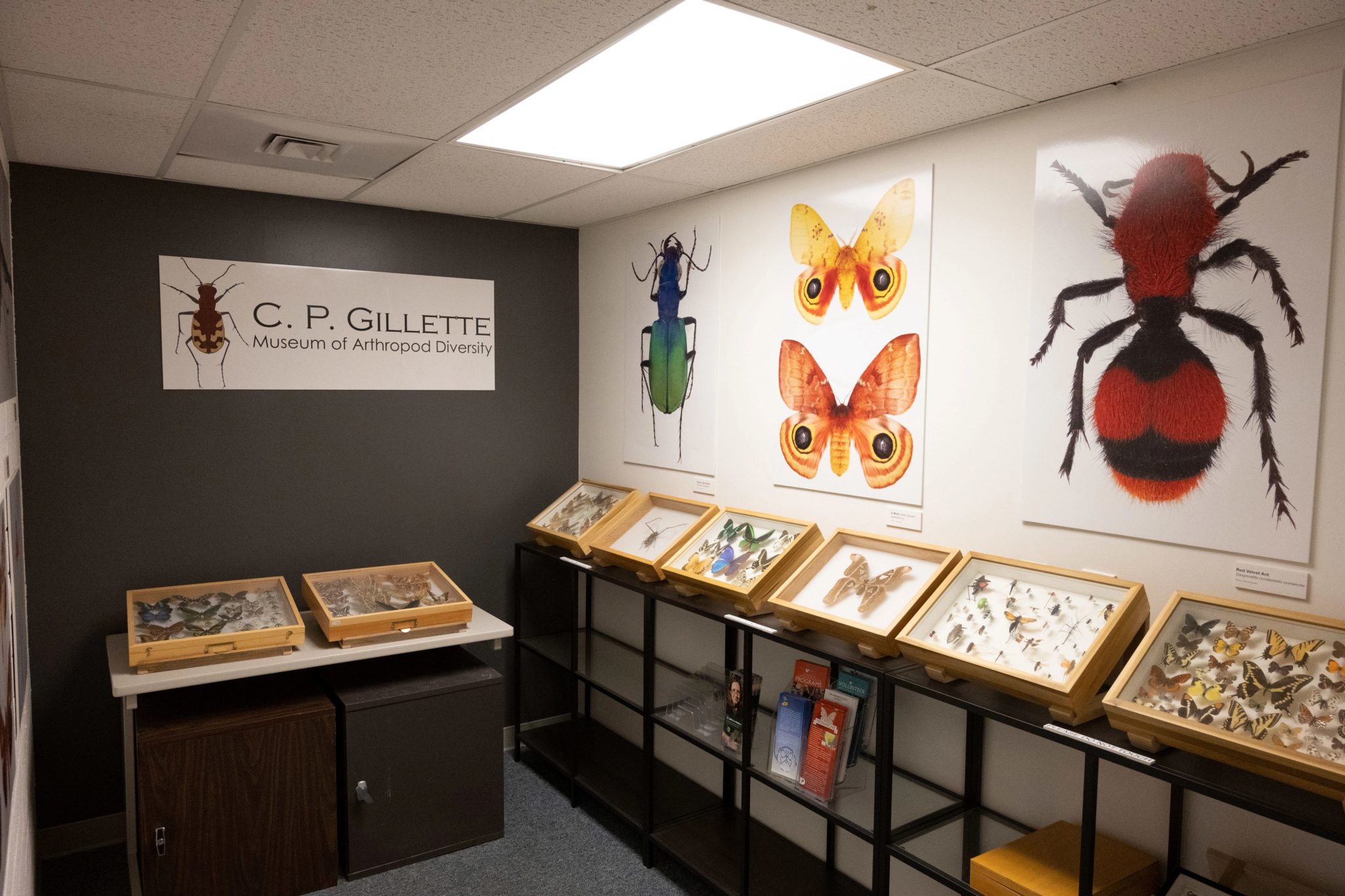
While he personally finds bugs most interesting when they’re on the end of his line while fly fishing, alumnus Dennis Bruner’s deep appreciation for entomology goes back generations.
“I have a very long history with Colorado State University’s entomology department, starting with C.P. Gillette, who was my great-grandfather,” said Bruner (’61, mechanical engineering).
An internationally recognized entomologist, Clarence P. Gillette came to the University in 1890 to formally establish the Entomology Department, now part of the Department of Agricultural Biology in the College of Agricultural Sciences.
“There was a program but at the time, it was in disarray apparently, and he came in to fix that,” Bruner said.
A year after his arrival, Gillette established an insect collection to assist the University in fulfilling its land-grant mission. For more than 40 years, he curated the collection, now known as the C.P. Gillette Museum of Arthropod Diversity. Open to both the University community and the public, the museum has provided opportunities for education, research and extension.

A long legacy at CSU
But while Bruner’s connection to CSU may have begun with his great grandfather, it didn’t end there.
Bruner’s grandmother (Gillette’s daughter), Florence, was a dormitory house mother for years at both Rockwell Hall, now home to the College of Business, and the agricultural fraternity Alpha Gamma Rho. But it was his parents that gave Bruner a lifelong connection to CSU and the College of Agricultural Sciences, he said.
Jim and Adele Bruner both graduated from CSU when it was still Colorado A&M in 1938 and 1939, respectively. Adele majored in Home Economics, while Jim majored in agronomy. For most of his career, Jim worked as an agronomist for the Department of Agriculture’s Soil Conservation Service.
Bruner himself followed a different path, graduating with a bachelor’s degree in mechanical engineering from CSU before earning his masters and Ph.D. from the University of Houston.
For more than 30 years, Bruner worked in the medical device industry. After retirement he served as an expert witness in lawsuits involving medical devices.
A history of giving
When his mother — herself a donor to the department, including to the museum’s Bruner Family Library — died, Bruner said he looked for continued ways to support the program that meant so much to his parents.
In addition to giving to the University’s biomedical engineering program — including creating the Dennis and Dorothy Bruner Biomedical Engineering Scholarship, he recently established the Bruner Family Scholarship in Entomology. The $50,000 endowment will be used to fund scholarships for students studying entomology, with preference to those who have worked at the C.P. Gillette Museum of Arthropod Diversity.
The timing is perfect as the department recently added Agricultural Biology, which has a concentration in Entomology, as an undergraduate major, said Amy Charkowski, professor and department head in the College of Agricultural Sciences.
“There are so many students at CSU interested in entomology and there have been for quite a while,” Charkowski said. The Gillette Entomology Club, established in 1912, is the oldest club at CSU, and with nearly 5 million specimens, the C.P. Gillette Museum of Arthropod Diversity features one of the largest insect collections in the world.

“It’s an important collection and one our students can learn a lot from,” Charkowski said. “It gives them a chance to truly understand the specimens, and we’ve even had students describe new species while working there. So, we’re thrilled that Mr. Bruner wants to continue his family lineage by supporting our efforts.”
For Bruner, the gift felt like the next natural progression in the family’s history with the department and CSU.
“I wanted to help the department and the museum continue C.P. Gillette’s work and further his name, as well as the Bruner family name,” he said.
Bruner also donated Gillette’s pocket watch and a small brass cicada to the department. Both items are currently on display at the museum’s entryway.
“That little cicada is actually a clicker,” Bruner said. “(Gillette) used that while he would lecture to indicate when he wanted a slide to be changed.”
Seeing the items on display — along with photos of his great grandfather — was a heartening experience, he said.
“The museum is such a cool thing, and it gave my mother a lot of pleasure to be part of that,” Bruner said. “And now it gives me pleasure to be part of it as well.”